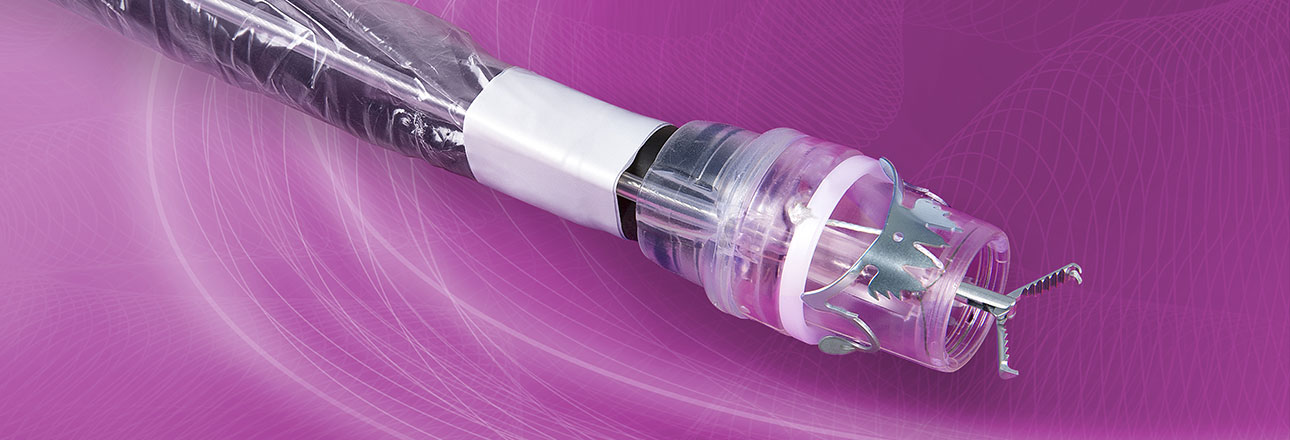In 40 patients with rectal neuroendocrine tumors (NETs), EFTR resulted in 100 % macroscopically and histologically complete resection. Median procedure time was 18.5 minutes. No major adverse events occurred.
B. Meier et al., Department of Gastroenterology, Ludwigsburg Hospital, Ludwigsburg, Germany, conducted the first larger study evaluating endoscopic full-thickness resection (EFTR) of rectal neuroendocrine tumors (NETs) with the FTRD® device. Rectal NETs are subepithelial tumors which bear potential for malignancy in about a quarter of cases. In consequence, depending on tumor size and risk factors, endoscopic or surgical resection is necessary. Hitherto, the optimal endoscopic approach is not defined.
For the study, the German FTRD registry, an online database comprising data on FTRD employment in 31 German endoscopy centers, was searched for cases of rectal NETs. 40 cases of rectal NETs were identified and analyzed retrospectively. The median lesion size was 8 mm (range 3 – 25 mm); small lesions (< 10 mm) accounted for 67.5 % (27/40), medium size (10 – 20 mm) for 30 % (12/40), and large lesions (> 20 mm) for 2.5 % (1/40). 15 % (6/40) were recurrent NETs and had been pretreated with EMR (4/6) or multiple forceps biopsies (2/6).
Resection of the lesion using the FTRD device was successful in all cases. The median procedure time was 18.5 minutes (range 7 – 60 minutes). Resection was macroscopically and histologically complete in all cases. Full-thickness resection was achieved in 38/40 cases (95.0 %). Histological examination of the resected specimen revealed in 70 % (28/40) low grade NETs without lympho-vascular infiltration (G1, L0, V0) and without other risk factors. In 30 % (12/40) histology showed granulation tissue or scarring.
No major adverse events occurred. Procedure-related minor adverse events were observed in 12.5 % (5/40). In four patients, minor periprocedural bleeding was seen and managed endoscopically by coagulation and/or injection. In one case, an FTRD snared rupture occurred during resection. The procedure was completed using a conventional resection snare. Endoscopic follow-up was available in 80 % (32/40) and performed over median 12 weeks (range 1 – 49 weeks). In no case, evidence of residual or recurrent tumor was found.
The authors concluded that EFTR with the FTRD is safe and effective for resection of smaller rectal NETs. It is associated with short procedural time, low complication rate and simplicity of the technique. EFTR with FTRD seems to be preferable to EMR/ESD for small and medium size rectal NETs, however, prospective comparative trials are needed to clearly define the role of EFTR in the treatment of rectal NETs.
Full-thickness resection of neuroendocrine tumors in the rectum
JMeier B, Albrecht H, Wiedbrauck T, Schmidt A, Caca K.
Endoscopy. 2020 Jan; 52(1):68-72. https://doi.org/10.1055/a-1008-9077


 English
English  Français
Français 